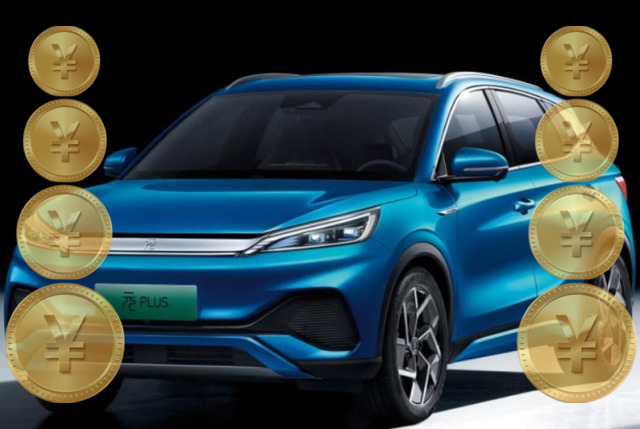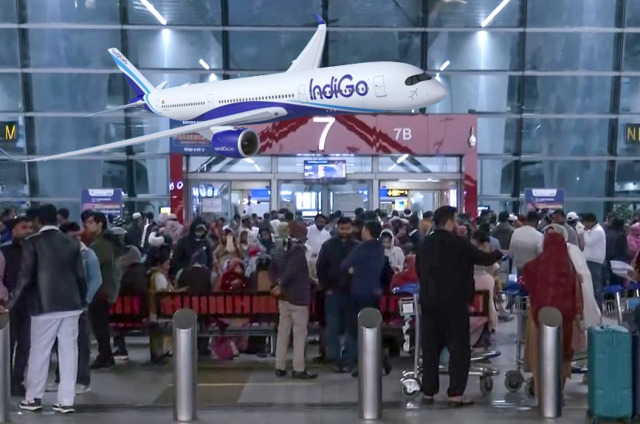
Chinese FDI In India Getting Electrified
BYD is the acronym for the Chinese electric as also conventional vehicle, auto components and high technology battery making group ‘Build Your Dreams.’ The company fulfilling many dreams across the globe is in India since 2007 starting with production of batteries and components for mobile phones. Not long after these businesses were consolidated, BYD, as was its original target ventured into electric mobility in this country starting with supply of electric bus to Chennai transport authorities. BYD’s electric vehicle (EV) portfolio has continued to expand since with the introduction of more EV bus variants and trucks.
India being already the world’s fourth largest producer and market for automobiles, BYD had all through nursed the ambition to make here locally passenger EVs that are likely to have 30 per cent share of the Indian car market by 2030. The company has incredible credentials both as manufacturer of EVs in different ranges and rechargeable batteries such as lithium-ion, NiMH and NCM ones.
Last year its production of 3.02 million vehicles was a lot more than that of Tesla. The now thwarted BYD’s ambition to build passenger cars in India was part of its global strategy to have manufacturing plants also outside China, seen as a sure way to get a bigger share of market of host countries, win the goodwill of local governments and equally importantly avoid the high tariff barrier. For example, the high priest of free trade the US has recently raised the duty on EVs imported from China fourfold to 100 per cent on the bogey of protecting the interest of American car manufacturers from “unfair trade practices” of the likes of BYD. Not as punishing as the US tariff wall, the European Commission has nevertheless levied a stiff duty of up to 38 per cent on EVs originating in China.
Free trade champions will argue that high trade barriers protect inefficiency of the domestic industry by guarding it from efficient counterparts in foreign lands. In the case of EVs, there is no evidence that China is giving WTO (World Trade Organisation) non-complaint subsidy to automobile companies. (At the same time, every country, including the US is incentivising production of EVs and hybrid vehicles and encouraging citizens to buy these non-polluting cars with sops. Ex-home battery charging remains a major issue in many countries, though.)
Competition improves efficiency and makes available products at best possible prices benefiting consumers. But the US and EU EV buyers can only rue their fate if their governments decide to go against the grain of free trade and universalisation of best work practices. In sharp contrast to what obtains in the US and the EU, New Delhi is allowing import of EVs at 15 per cent duty, including those from China. But this comes with caveats that overseas exporting companies will make minimum investment of $500 million within three years in manufacturing plants and these will have to achieve 25 per cent localisation in three years and 50 per cent in five years.
ALSO READ: Where Do India, China Stand In Defence Technology?
Thanks to production linked incentive (PLI) scheme and FAME II and the involvement of a growing number of automobile groups to make hybrid and EVs, India saw EVs making up 6.5 per cent of all vehicles sold here in 2023, which was an impressive 50 per cent jump from the year before. Which EV manufacturer, which still does not have a plant here, will not want to be in India where the government is offering liberal incentives to facilitate rapid migration from fossil fuel driven vehicles to automobiles powered by energy stored in batteries. Expectedly, the available circumstances encouraged BYD, which is by far the world’s largest EV producer to doggedly pursue with New Delhi for clearances to build an EV factory in Hyderabad in a joint venture with Megha Engineering and Infrastructure.
The JV proposed an investment of $1 billion, that is, double the government prescribed minimum investment in EV manufacturing to be allowed to import at 15 per cent duty. The BYD proposal to build a manufacturing base for capacity up to 15,000 EVs a year here looked particularly attractive because of the inclusion of battery making facilities. But in its pursuit of government clearances, the JV hit a wall of silence. An official Press note says investments originating in a country with which we share land border will have to go through the government route. Even while security concerns have led New Delhi to enact the policy, it claims to have introduced it as one to stop “opportunistic” FDI that may lead to “takeover/acquisitions of Indian companies.”
Earlier, another Chinese automaker Great Wall Motor Company engaged in making cars at multiple locations globally with conventional internal combustion engine found its application to build a $1 billion factory here not cleared. Why only automobile industry FDI proposals, Chinese companies engaged in making high-tech electronic products, including for Apple, have too failed to secure approvals for establishing manufacturing units in India through FDI. India’s security concerns vis a vis China became particularly severe following Chinese incursions in Ladakh’s Galwan Valley in 2020 when a number of Indian soldiers were killed in our army’s attempt to push back the infiltrators.
It is nobody’s case that New Delhi should be any less vigilant about its mighty neighbour in the north for Chinese FDI. The security establishment engaged in foiling Chinese aggressive designs and the foreign ministry that must match Beijing’s diplomacy to win friends in our neighbourhood and beyond will expectedly be obsessively cautious about Chinese FDI even at the cost of our own economic interest.
While India has its reservations, China has firmly established itself as one of the world’s foremost direct investors in foreign countries. Consider this, China had a 10.9 per cent share in the total global FDI outflows of $1.55 trillion in 2023. In the midst of China conundrum, it is important to remember that country described as the “world’s factory” has replaced the US to become India’s largest trading partner with the two-way trade at 118.4 billion in 2023-24. But the trade with China leaves New Delhi with the challenge to very substantially bring down the deficit of $85 billion in 2023-24.
The 2023-24 Economic Survey says China comes 22nd among countries committing FDI here with an insignificant share of 0.37 per cent ($2.5 billion) of total FDI inflows between April 2000 and March 2024. This should be seen against the value of China’s overseas investment, including construction since 2005 approaching $2.5 trillion. Whatever the security concerns, New Delhi must not lose sight of the fact that China and not the US is now the largest source of investible savings in the world.
Seen as the brainwork of V Anantha Nageswaran, chief economic adviser to the finance ministry and who is in charge of putting together the Economic Survey, a long paragraph in it says: “India faces two choices to benefit from China plus one strategy: it can integrate into China’s supply chain or promote FDI from China. Among these choices, focusing on FDI from China seems more promising for boosting India’s exports to the US, similar to how East Asian economies did in the past. Moreover, choosing FDI as a strategy to benefit from the China plus one approach appears more advantageous than relying on trade. This is because China is India’s top import partner, and the trade deficit with China has been growing. As the US and Europe shift their immediate sourcing away from China, it is more effective to have Chinese companies invest in India and then export the products to these markets rather than importing from China, adding minimal value, and then re-exporting them. Further, 105 HS Code-8402, 8406 and 8414. 106 Sourced from the presentation made by Pierre-Olivier Gourinchas, Economic Counsellor and Director of Research Department, IMF at NCEAR, India Policy Forum on 2 July 2024, ‘CRACKS IN THE SYSTEM: How Geo-Economic Fragmentation is Reshaping the World’ External Sector 145 a recent research note from the Rhodium Group points out, ‘China’s dominance over so many product categories creates, first and foremost, a risk of economic coercion, where the government restrains access to crucial inputs for political leverage.’107 The same brief also notes, ‘Brazil and Turkey have raised barriers to imports of Chinese EVs, but enacted measures to attract Chinese FDI in the sector.’ European nations, too, have decided to follow a similar approach 108. Hence, it is imperative that India finds the right balance between importing goods from China and importing capital (FDI) from China.”
It will be far-fetched to believe that such a loaded paragraph could find a place in the Economic Survey without the nod from his boss Nirmala Sitharaman. This expectedly has raised a tempest in a teapot, with so many from politicians to economists to military strategists joining the debate. Unarguably, the most sensible, dispassionate point on the subject has been made by Arvind Panagariya, chairman of the 17th Finance Commission, in an interview with the Economic Times: “I am not a security expert, but those who are should be able to tell us the kinds of investments that carry security risks. Beyond that, we may allow Chinese investments. Remember that we also acquire leverage against China when a sizeable investment by that country is on our soil.”
For more details visit us: https://lokmarg.com/



